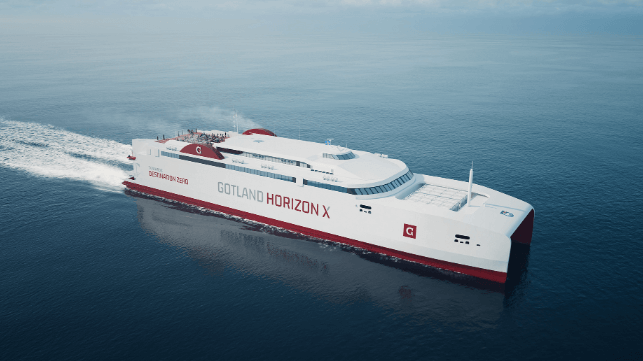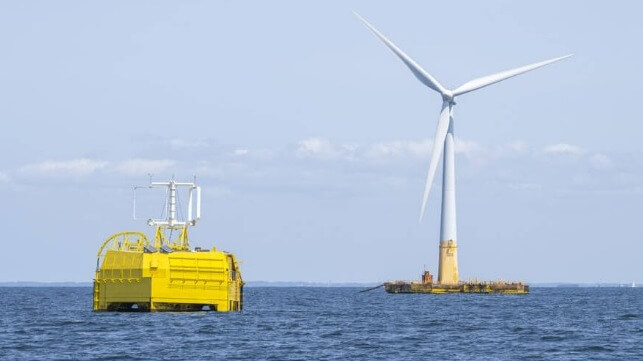Bloomberg News | October 9, 2023 |

H2GS executives also seek to benefit from access to the St. Lawrence River for shipments and the region’s iron ore reserves, in particular from Rio Tinto’s Iron Ore Co. of Canada. (Image of IOC operations courtesy of Rio Tinto)
Sweden’s H2 Green Steel is in talks with governments in Canada to build a factory in northern Quebec, as the young firm tries to deliver on a promise to customers — steel produced with minimal carbon emissions.

The company is just starting on construction of its first plant in Boden, Sweden, with an ambitious goal to begin production by late 2025. Supply agreements have been signed with automakers including Mercedes-Benz Group AG.
“We bring with us a portfolio of customers who want to have supply in North America,” H2GS Chief Executive Officer Henrik Henriksson said in an interview with Bloomberg News in Ottawa, where he was part of a Swedish delegation led by business mogul Marcus Wallenberg to meet officials including Prime Minister Justin Trudeau.
Stockholm-based H2GS was launched in 2021 by private equity veteran Harald Mix’s investment vehicle Vargas Holding AB, and includes backers such as Spotify Technology SA billionaire Daniel Ek.
Vargas is also behind Northvolt AB, which recently announced plans for a C$7 billion ($5.1 billion) electric vehicle battery plant near Montreal.
The potential Quebec green steel project would be located on a 500-acre site in the city of Sept-Iles, northeast of Montreal, and require an investment of between €3 billion ($3.2 billion) and €6 billion. One plan would see H2GS build a “green iron” plant and a giant electrolyzer powered by renewable energy that would supply the site with hydrogen, replacing the use of carbon-intensive coal. The iron would then be exported.
A more ambitious scenario would include a full steel mill requiring as many as 2,000 workers, similar to the Boden site.
“It will depend on the dialogue we have with authorities in Canada regarding power allocation,” explained Henriksson. The firm is looking for as much as 700 megawatts of electricity — about 1.5% of Quebec’s actual capacity. Peak demand can create bottlenecks on the grid during winter, and government-owned utility Hydro-Quebec has become more selective about projects as demand surges for its low-cost clean power.
H2GS executives also seek to benefit from access to the St. Lawrence River for shipments and the region’s iron ore reserves, in particular from Rio Tinto’s Iron Ore Co. of Canada and Champion Iron Ltd.
“Fairly early, we could see that Quebec has this perfect place with a combination of logistics ready and a certain quality of iron ore,” said Kajsa Ryttberg-Wallgren, an H2GS executive vice-president. Still, a single condition prevails before going further: “No green power, no project.”
Steel production, which has relied on many of the same production techniques for more than a century, accounts for about 8% of total energy system emissions, according to the International Energy Agency.
Aside from Quebec, H2GS is also doing a feasibility study on Texas, betting on rapid wind and solar development. “Canada is definitely ahead, but Texas has a very progressive view on creating business,” said Ryttberg-Wallgren. “They are not many places in the world where you actually have optimal conditions.”
Sites in Brazil and Portugal are also in the firm’s future pipeline with its partners Vale SA and Iberdrola SA.
H2GS’s management did not comment on the financial support expected from Canadian governments, stating only that it will be benchmarked with other states.
The steelmaker hopes to kick off the construction of a North American site by 2026, with production starting four years later. Executives say it will take about 18 months of permitting, similar to Sweden, but public support for major projects can be unpredictable in Quebec.
Still, governments in Canada have been willing to promise billions in subsidies to lure industrial projects that pledge lower emissions. At Northvolt’s announcement in September, Quebec government officials said the province had secured C$15 billion ($11 billion) worth of investments related to the electric vehicle industry over the past three years, an amount that should double in the near future.
Pierre Fitzgibbon, Quebec’s minister of economy and energy, is interested in a green steel project, spokesperson Mathieu Saint-Amand said by email. “The specific project from H2GS has not yet been analyzed by the ministry. We understand the importance of developing decarbonization technologies in the steel sector.” Laurie Bouchard, a spokeswoman for Canadian Industry Minister Francois-Philippe Champagne, said the Swedish company’s interest “speaks to our efforts and commitment to a greener future.”
So far, H2GS has secured €6 billion — €1.8 billion in equity and €4.2 billion in loans — for the construction of the Boden facility. Henriksson said the firm will close a small funding round in October. The next big round, estimated at €1.5 billion, will be linked to the North American project or Boden’s expansion, he said.
“We will be a company that is in constant funding mode,” said Henriksson, the former head of Swedish truck manufacturer Scania CV. “After 2026, when we’re up and running with positive cash flow, that would probably be a better timing to do an initial public offering.”
(By Mathieu Dion and Rafaela Lindeberg, with assistance from Lars Paulsson)





